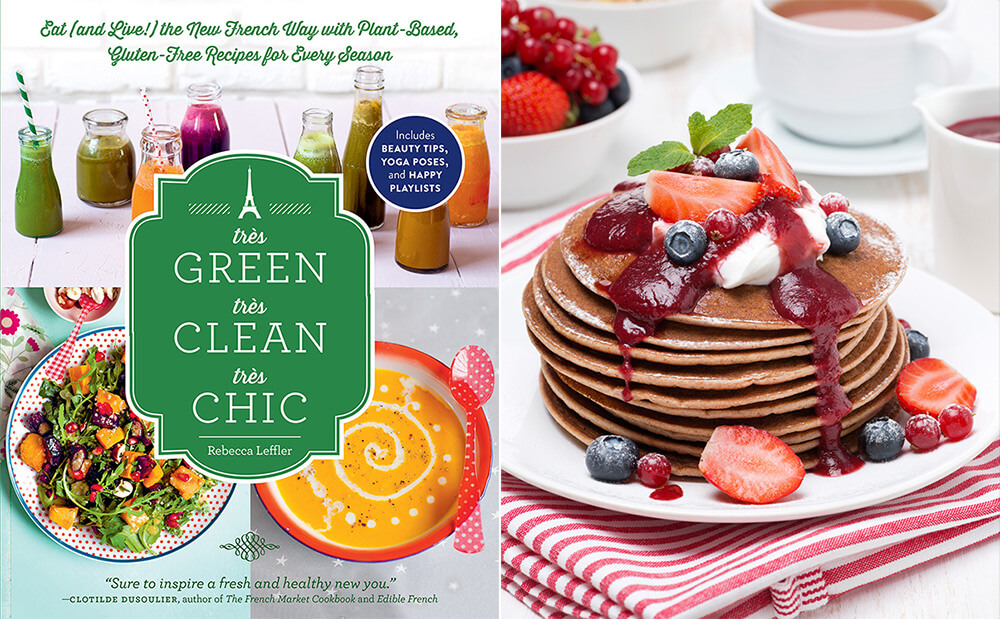“When I moved to Paris, I was like, ‘What is the pâtisserie of the day?’ I had to get a fresh baguette every single day,” recalls Rebecca Leffler, the American author of her new book “Tres Green, Tres Clean, Tres Chic.” With a grandfather deli owner and a baker for a great-grandfather, Leffler had good food in her genes and always loved cooking. But two years ago, the 32-year-old began having some health issues that forced her to completely change her diet. “When the doctor said no dairy, no gluten, I got really confused because back then my life in France was all about bread and cheese,” she says. “But then I realized that au contraire, I didn’t have to deprive myself, it would just force me to get more creative.” Yes, French cuisine does promote healthy eating
Though France is famous for its tasty cheeses, breads, wines, heavy dishes with plenty of sauce and, of course, buttery desserts, Leffler feels it’s far from incompatible with green and clean eating. “French cuisine is all about eating seasonally,” she says, recalling the time when she went to a farmers market in winter asking for blueberries, only to have them laugh in her face. “Most French restaurants are farm-to-table. They aren’t all organic, but they promote locally produced and sourced products.” With superfoods like kale and chia seeds that weren’t used in classical French recipes, she’s shaken up tradition, too. “It may be a scandal for purists – Auguste Escoffier is probably turning in his grave now – but I revisited his famous sauces. My velouté has cashews, and I add tahini to the hollandaise,” she confides. Making chocolate mousse with ripe avocado and replacing the pizza crust with a Socca base (a traditional dish from Nice)? We daresay the French would be impressed.
Make it work for you
Forget crash diets and juice cleanses — the French way of detoxing is about realizing that you can do something to feel healthier every day. “It’s all about finding the right balance for you,” Leffler points out. Unless you have a health condition, Leffler doesn’t recommend going fully vegan and gluten free; just try and be conscious about the choices you make, such as buying baked goods from small bakeries that don’t add chemical ingredients to their products. And most importantly, these recipes must fit your taste to add up to a lifestyle change. “My recipes are vegan, soy- and gluten-free, but people are more than welcome to add some tofu, eggs, cheese or meat to their liking,” she adds.
Can’t decide between a thin French crêpe and its robust American cousin, the pancake? Try a pancrêpe! It’s thicker than a crêpe and thus, much easier to make at home – no special skillet required. Ingredients for thepancrêpes:
2 tbsp. coconut oil Ingredients for the sauce:
1 cup chopped seasonal fruit (apples, pears, cherries, figs) Directions:
Blend the flours, baking powder and salt In a bowl. Add the maple syrup, lemon juice and almond milk and mix well. The consistency should be liquid, but thick. If you prefer thinner pancrêpes, add more almond milk. Put a small portion of the coconut oil into a pan on low heat until melted. Pour in a scoop of the batter. Cook for about 2 minutes, until the top starts to bubble, flip and cook until golden brown. Repeat; recipe makes about eight pancakes. To make the sauce, either blend all ingredients in a blender until smooth and creamy, or add all ingredients to a small pot and cook, covered, on low heat for 5 to 10 minutes, until soft. Mash with a fork, then spoon on top of the pancrêpes.
½ cup buckwheat flour
½ cup brown rice flour
1 tsp. baking powder
Pinch of salt
1 tbsp. maple syrup
1 tbsp. lemon juice
1¼ cups almond milk
1 tsp. lemon juice
¼ tsp. vanilla powder or extract
¼ tsp. cinnamon
Eating well (and gluten-free!) in Paris

Provided; iStock

























